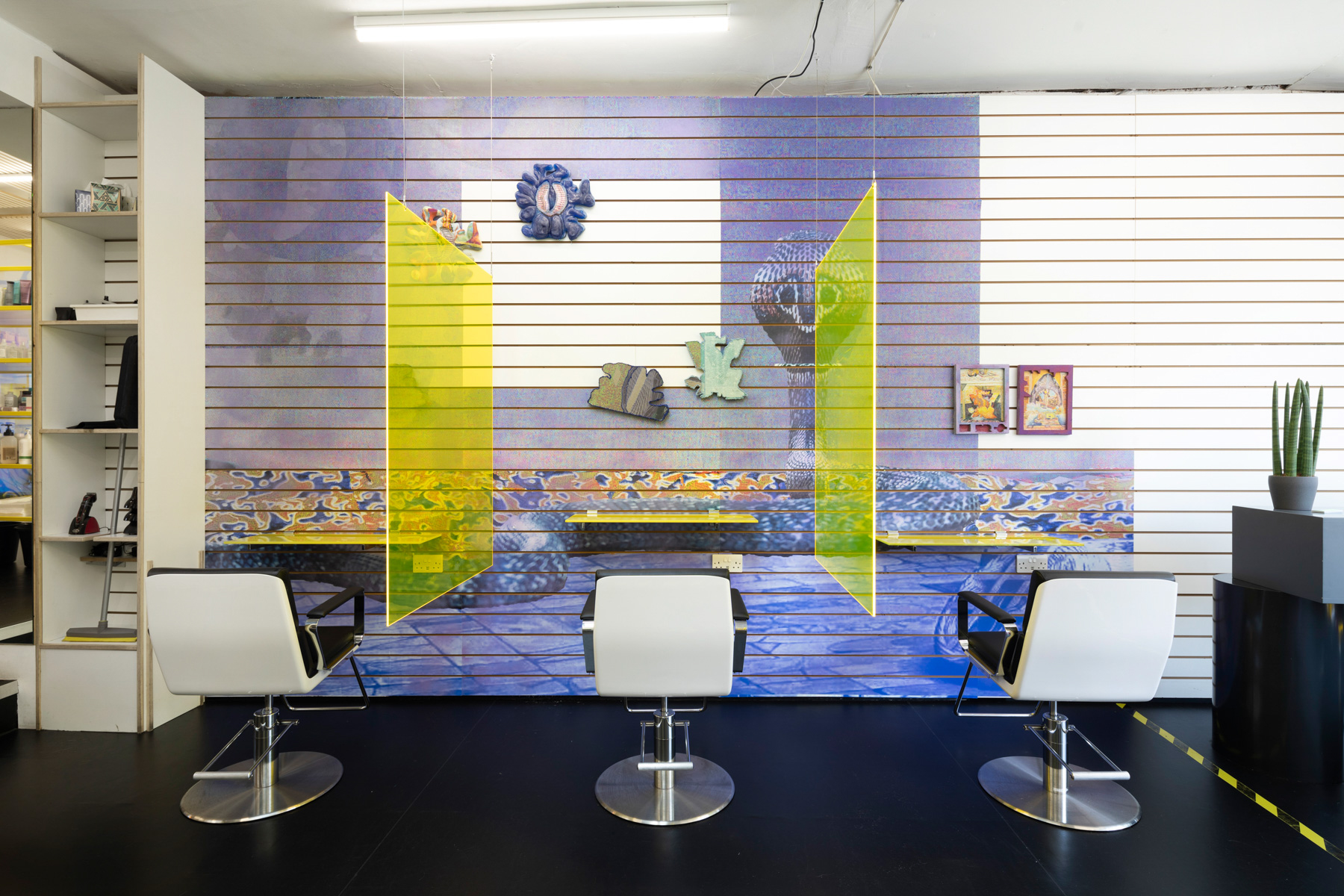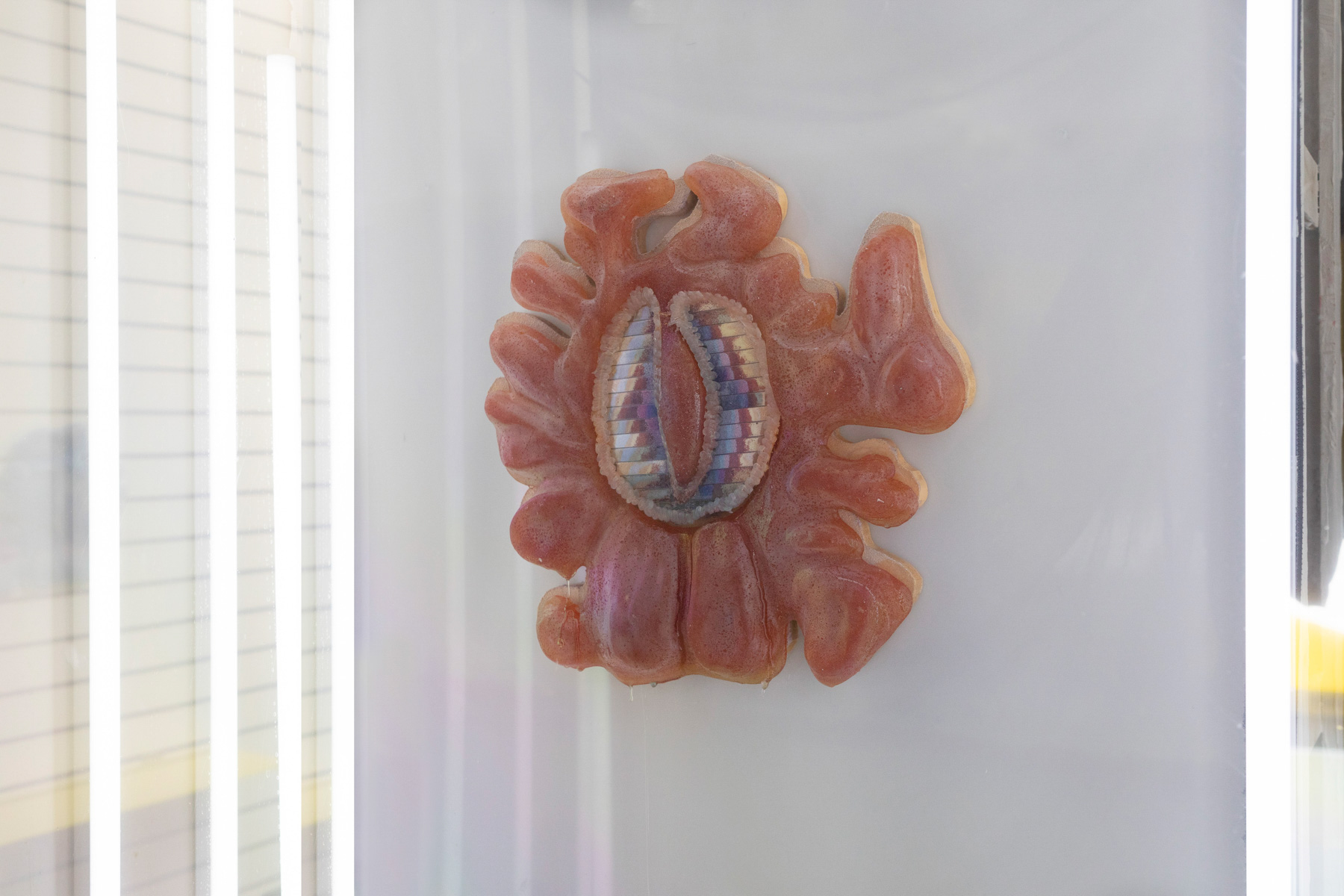scaled reiterations
Alia Hamaoui
Alia Hamaoui’s work draws upon her own cultural heritage and spans sculpture, video and painting. She creates constellations of works that explore lost histories, their physical remnants, and their relation to contemporary image culture. The use of layering and visual feedback loops reflects the nature of how images shape reality and reality shapes images. Our recent memories are now digitized and fed back to us at regular intervals, whilst we consume histories through cultural spaces, artefacts and the features of heritage. Describing her work as “modern day relics”, Alias’s processes relate to those of archaeology and offer the viewer a reflective distance from the present and its reflection of the past.
The Snake Charmer by Jean-Léon Gérôme provides a starting point for a new body of work, made in response to the space of DKUK. Painted in 1879, this work echoes the experience of gazing at oneself in the hair salon’s mirror: the viewer is positioned to face an audience who gaze upon a boy dancing with a snake, the back of whose head the viewer also observes. Drawn to the “mathematical quality” of the DKUK space, Alia has allowed these hard edges to enter the work through polycarbonate inlays and layered sheets of bevelled MDF that contrast with their organic and abstract forms.
Alia dissects how the tropes adopted by Orientalist paintings, Modern-day cinema and the mass media falsely portray the Middle East through an “exotic” light. A series of sculptural wall and floor-based works emerge as fragmented landscapes that question our desire to escape to “other worlds” and are shaped by the image of a snake eye staring back at the viewer. The video works, Blurry Sets, incorporate footage sourced from Hollywood films that depict violent acts occurring in front of setting suns, creating a hypnotic mirage that captures the viewer in voyeuristic gaze only to have it periodically interrupted. Throughout the exhibition, Alia uses networked acts of repetition and recollection to consider how our perspective on the present is constructed via image circulation and the cultural representation of histories and places.




